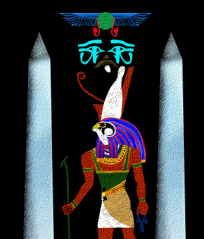

"And the pyramids of Giza were monuments of hope. Today we are fascinated by their size, the precision of their masonry work that eschews the use of mortar, their recondite air. But to the kings of Egypt and the Old Kingdom millions who accepted them as divine, the pyramids were the sole efficacious link between themselves and the realm of the gods, not abstract curiosities. They reproduced architecturally a cosmic truth that called to mind the creation and its eternal guarantee, the rising and setting sun. In several statements of the Pyramid Texts, the earliest preserved body of religious literature carved on the walls of royal tombs, the pharoah is described as using the rays of the sun, in place of a staircase, to ascend to Re:"I have trodden these thy rays as a ramp under my feet whereon I mount up to my mother Uraeus on the brow of Re."
Heaven strengthened the rays of the sun, we are told, to facilitate this ascent. It seems likely, then, that the Giza pyramids-these awesome masses of stone-were monuments to something immaterial and gosssmer, the rays to the sun. They were the visible proof for the people who tilled the benign land that the universe was ordered, their well-being and safety vouched for. To us, stripped of their reflective limestone casing and the gold overlay of their capstones, the pyramids seem relentlessly earthbound, broad-based and massive, stone mountains. But to their own audience, they were luminous arrows emanating from, and leading the way to, the sun. More than two thousand years before Christ, these shimmering specters of the desert that focused the long band of water and field that was Egypt proclaimed the truth of the promise:
"I am the light of the world...He that believeth in me, though he were dead, shall never die."
-A History of Architecture, Spiro Kostof.